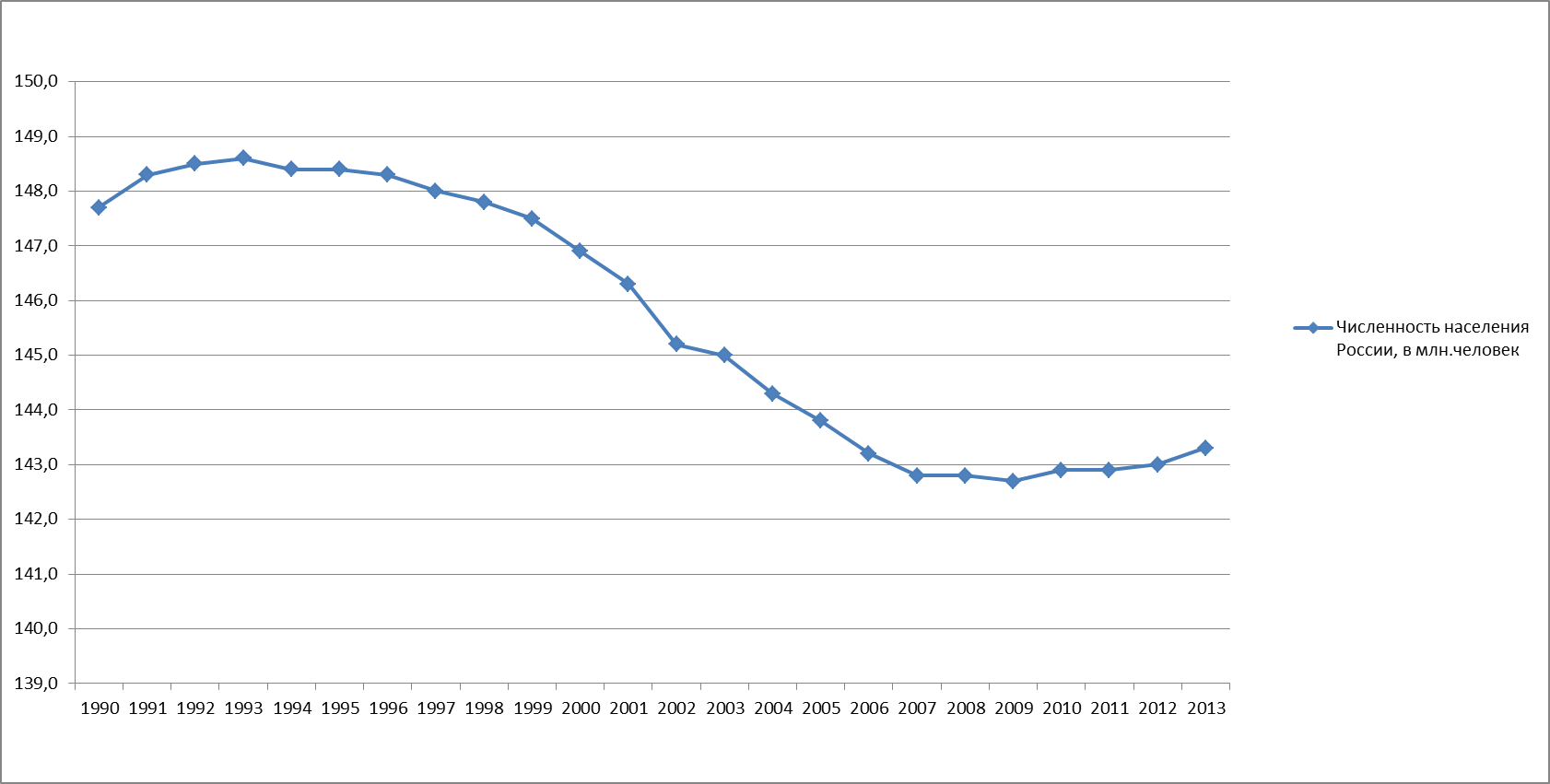Expert of the Center for Scientific Political Thought and Ideology, Ph.D., Nadezha Khvylya-Olinter
Despite the solemn statements of officials that Russia has begun to get out of the demographic crisis, optimistic assessments of changes in this area are very premature. The indicators of the pre-crisis 1990s differ from those of today by more than 5 million people. In the last few years, there has indeed been a certain trend towards an increase in the number of Russians, but it is still too early to talk about overcoming the global negative trend.

Rice. 1. Dynamics of the population of Russia.
There is a widespread point of view that the demographic crisis in Russia is caused, first of all, by material reasons. It's not like that at all. It has been calculated that the value of the correlation coefficient, which shows the relationship between the material well-being of the population and demographic success, is negative, that is, there is simply no causal relationship between these variables. The deep cause of the demographic crisis lies in the fact that the meanings of people's existence have been lost. The strength of the psychological discomfort caused by the discrepancy between the surrounding reality and the cultural program is so great that the population subconsciously refuses to implement the functions of reproduction.
In addition, the demographic catastrophe is caused by problems in several areas - low birth rate, low life expectancy, high mortality, a decrease in the number of women of reproductive age, and the spread of suicides. It is clear that the material factor cannot influence all of the above problems.
The population does not feel the point of continuing their family, and their own lives in modern Russian conditions.
The absence of a higher idea of existence, the distortion of mental foundations, the discrepancy between the traditional worldview and the surrounding reality - these are the underlying factors of the country's extinction. How likely is it that the population growth in Russia will continue and reach the historical maximum of 1993 (148.6 million people)? Forecasting shows that out of 36 possible scenarios in terms of population change (taking into account the migration factor), only 9 turned out to be positive, allowing us to count on a population growth of up to 145 million people or more. Only two of them admit the possibility of an increase in the population of over 150 million people (but they combine high birth rates and life expectancy with the highest level of migration). According to 12 scenarios - the population will stabilize in the range from 140 to 145 million, and 15 forecasts are pessimistic, showing a decrease in the number of citizens below 140 million, and in the worst of them - up to 128 million people.
Only one out of four forecasts for further changes in Russia's population is positive. However, they are also largely based on the expected migration growth, which can hardly be called a really winning situation, since high migration qualitatively changes the ethnic composition of the country's population.

It is obvious that the probability of the development of one or another scenario is not random, it is not a lottery, and the result depends very much on the literacy of management decisions. The effectiveness of the socio-demographic policy pursued in the country, the correctness of the foundations and principles underlying it, significantly increase the chances of realizing positive scenarios. Wrongly chosen strategy, illiterate and incompetent approach - and the country rushes to extinction and death.
The solution of the demographic problem is not limited to the promotion of family values and material stimulation of the birth rate. This problem requires an integrated approach, otherwise the results, if any, will be short-lived.
State management policy should be carried out in the following important areas. First, the restoration of the national identity of the state (the revival of the state-forming potential of the Russian people, overcoming the negative consequences of the collapse of the USSR). Secondly, overcoming ideological and spiritual degradation (increasing the role of the Russian Orthodox Church in society, promoting traditional Russian values). Thirdly, improving the quality of public policy in general. Solving the social and material problems of citizens (protection of motherhood and childhood, labor protection, solving the housing problems of families, the formation of a system of social charity, improving the situation of socially significant diseases, material support, protecting the health of the population, improving the environment).
An integrated approach to the formation of state policy in the field of demography will ensure the achievement of not a quick, but a sustainable result. The goal is obvious - to prevent a geopolitical catastrophe, save the country and restore its greatness.
2 State policy of Russia's withdrawal from the demographic crisis / Monograph. V.I. Yakunin, S.S. Sulakshin, V.E. Bagdasaryan and others. Under the general editorship of S.S. Sulakshina. 2nd ed. - M .: CJSC "Publishing house" Economics ", Scientific expert, 2007. - 888 p.
3 See: http://demoscope.ru/weekly/2014/0601/tema02.php
4 http://demoscope.ru/weekly/2014/0601/tema02.php
5 State policy of Russia's withdrawal from the demographic crisis / Monograph. V.I. Yakunin, S.S. Sulakshin, V.E. Bagdasaryan and others. Under the general editorship of S.S. Sulakshina. 2nd ed. - M .: CJSC "Publishing house" Economics ", Scientific expert, 2007. S. 600-664.